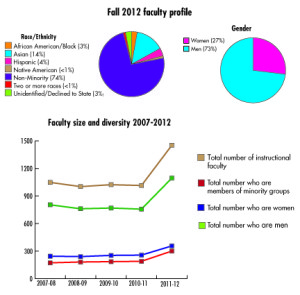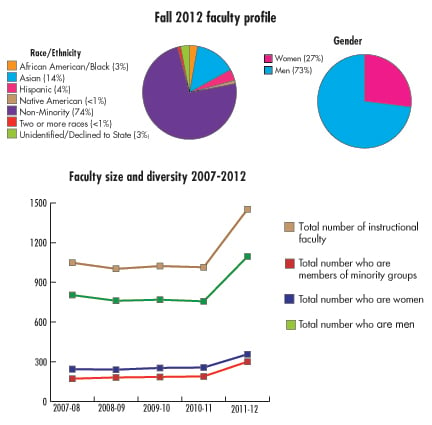Stanford’s faculty development is steadily on the rise, unlike that of peer institutions struggling to recover from the 2008 recession.

Over the past decade, Stanford’s faculty has grown by over 230 members, said Karen Cook ’68, vice provost for faculty development and diversity. In the 2010-11 academic year, there was a small dip in the total number of instructional faculty from 1,023 to 1,014, but last year the total reached 1,452, according to the University common data set.
“We’ve been able to recover more quickly from the recession than our peers have,” Cook said, crediting University management for the success.
At Yale, faculty growth has remained stagnant over the past four years, according to the Yale Daily News.
“The size of the Faculty of Arts and Sciences has been held at roughly 700 since the financial downturn tore a $350 million hole in Yale’s budget,” The News reported.
In comparison, Stanford has maintained a working budget to allow for the increases in faculty hiring. The 2012-13 University Budget Plan showed a 5 percent increase in salaries and benefits, continuous from 2011-12.
“The increases reflect both a rise in salaries and the increase in number of staff and faculty,” Provost John Etchemendy said in a May 2011 meeting of the Faculty Senate.
At the departmental level, department chairs report adequate faculty hiring rates.
Paula Findlen, former history department chair, said there is widespread approval of recent faculty development in her department.
“We are certainly happy with the hiring opportunities that the university has offered the History Department,” Findlen wrote in a statement.
Faculty diversity
As the amount of faculty hiring increases, Stanford’s Office of Faculty Development and Diversity can focus more on diversifying the demographics of faculty members. At the May 2011 Faculty Senate meeting, Special Assistant to the Provost for Faculty Diversity Albert Camarillo called Stanford the “premier university” in the field.
More than 20 percent of the total instructional faculty members at Stanford are “members of minority groups.” Eight years ago, it was 16.3 percent.
The Faculty Development and Diversity website states its commitment to a diverse faculty for its “increasingly diverse student population.”
Camarillo said in a statement that of his department’s several new appointments in the past five years, at least half have been women.
The divide between appointments in the School of Humanities and Sciences and the School of Engineering is clear. Computer Science professor Eric Roberts pointed out the underrepresentation of minority faculty in his department.
While Roberts praised the representation of female faculty in computer science, specifically the appointment of Department Chair Jennifer Widom, he said he would like to have much greater diversity than currently exists. He believes this can go hand-in-hand with faculty growth.
“Nationally in computer science we’re seeing a huge increase in the number of positions being advertised because there is so much more interest in it,” Roberts said.
Programs like the Faculty Incentive Fund, started when Condoleezza Rice was Provost, aim to develop the faculty’s diversity. The Faculty Development Initiative, headed by Camarillo, was launched in 2007 as an extension of the Faculty Incentive Fund.
The Initiative, jointly administered through the Office of the Provost and the Center for Comparative Studies in Race and Ethnicity, has produced 11 faculty hires since 2008.
Cook sees Stanford continuing an upward projection in faculty development and diversity, more so than its peer institutions.
“I think Stanford has really done a good job recently in terms of supporting new faculty and being engaged in broad searches to bring in first-rate faculty from all over the world,” Cook said. “I think it’ll only get better.”
